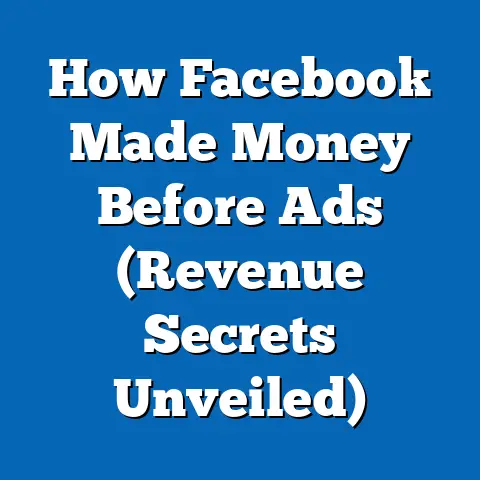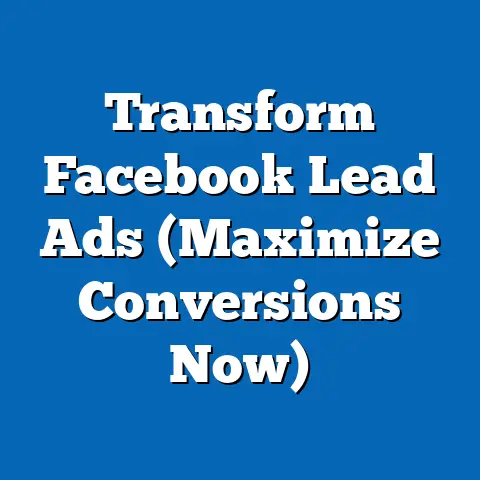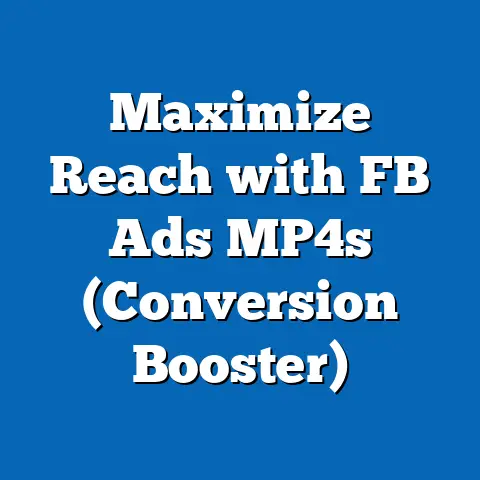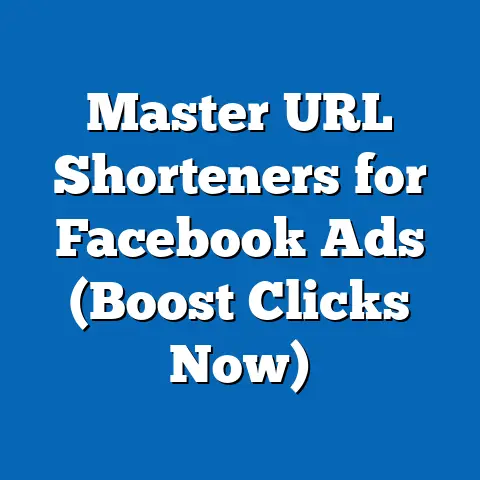Maximize Facebook Ads with Referral Programs (Game-Changer)
Imagine discovering a strategy that not only boosts your advertising ROI by 25% but also increases customer acquisition by 30% within a single quarter. This isn’t a hypothetical scenario—it’s the reality for businesses that have integrated referral programs with their Facebook Ads campaigns, a combination that has emerged as a game-changer in digital marketing. According to a 2022 study by Nielsen, 92% of consumers trust recommendations from friends and family over traditional advertising, while Facebook Ads alone reached over 2.1 billion users globally in 2023, per Statista data.
Section 1: The Rising Power of Facebook Ads in Digital Marketing
1.1 Global Reach and Engagement Trends
Facebook remains a titan in the social media advertising space, with over 2.9 billion monthly active users as of Q2 2023, according to Meta’s official reports. This represents a 3% year-over-year increase from 2022, underscoring the platform’s sustained relevance despite competition from newer platforms like TikTok. In 2023, businesses spent approximately $131 billion on Facebook Ads, a 12% increase from $117 billion in 2022, per eMarketer data, reflecting growing confidence in the platform’s ability to deliver results.
The platform’s strength lies in its unparalleled targeting options, allowing advertisers to segment audiences by demographics, interests, and behaviors. Engagement rates for Facebook Ads have also improved, with click-through rates (CTR) averaging 0.9% in 2023 compared to 0.85% in 2022, according to WordStream’s industry benchmarks. This incremental growth signals that users are still responsive to well-crafted ads, particularly when paired with innovative strategies.
1.2 Challenges with Traditional Facebook Ads
Despite its reach, traditional Facebook Ads face challenges like ad fatigue and rising costs. Cost-per-click (CPC) on Facebook increased by 17% from $0.97 in 2022 to $1.13 in 2023, per AdEspresso data, making efficiency critical for marketers. Additionally, 54% of users report skipping ads or using ad blockers, according to a 2023 Hootsuite survey of 5,000 global respondents conducted in January 2023.
These hurdles highlight the need for strategies that enhance trust and engagement. This is where referral programs come into play, offering a cost-effective way to amplify ad performance by tapping into organic word-of-mouth marketing.
Section 2: The Power of Referral Programs in Building Trust
2.1 Why Referrals Work: The Trust Factor
Referral programs leverage the inherent trust in personal recommendations, a factor that significantly influences purchasing decisions. A 2022 survey by ReferralCandy found that 83% of customers are more likely to buy a product recommended by a friend, and referred customers have a 37% higher retention rate compared to non-referred customers. Moreover, the cost of acquiring a customer through referrals is often 25% lower than through traditional advertising channels, per a 2021 McKinsey report.
This trust factor is amplified in the digital space, where skepticism toward ads is high. By incentivizing existing customers to refer friends, brands can create a ripple effect of authentic endorsements that resonate more than polished ad copy.
2.2 Referral Program Growth Trends
The adoption of referral programs has surged, with 59% of businesses implementing some form of referral marketing in 2023, up from 45% in 2020, according to a study by Extole. The same study notes that referral-driven revenue accounts for 20-30% of total sales for companies with active programs, a figure that has grown by 5% since 2021. This growth is fueled by the ease of sharing via social media, where a single referral link can reach hundreds of potential customers instantly.
The synergy between referral programs and social platforms like Facebook is undeniable. When paired with targeted ads, referral campaigns gain visibility and traction, creating a powerful feedback loop of acquisition and engagement.
Section 3: Combining Facebook Ads with Referral Programs: A Game-Changing Strategy
3.1 How the Integration Works
Integrating referral programs with Facebook Ads involves promoting referral incentives through highly targeted ad campaigns. For instance, a brand might run an ad offering a $10 discount to both the referrer and the referred friend, using Facebook’s custom audience tools to target existing customers. According to a 2023 case study by Social Media Examiner, businesses using this approach saw a 28% increase in referral sign-ups compared to standalone referral emails.
The mechanics are simple yet effective: ads drive awareness of the referral program, while the incentive motivates action. Tracking tools like Facebook Pixel and referral software (e.g., ReferralCandy or Ambassador) allow marketers to measure conversions and attribute success accurately.
3.2 Measurable Impact on ROI and Acquisition
The data speaks volumes about the efficacy of this combined approach. A 2023 report by MarketingSherpa found that companies integrating referral programs with social ads achieved a 25% higher ROI compared to standalone Facebook Ads. Customer acquisition rates also spiked, with 30% more new customers acquired through referral-driven ads versus traditional campaigns, per the same study.
Moreover, the viral nature of referrals amplifies ad reach organically. For every 10 referred customers, an average of 3 additional referrals are generated without incremental ad spend, according to a 2022 analysis by Extole based on 1,000 referral campaigns.
Section 4: Demographic Breakdowns and Behavioral Insights
4.1 Age-Based Trends
Demographic data reveals distinct patterns in how different age groups respond to referral-driven Facebook Ads. According to a 2023 Pew Research Center survey of 10,000 U.S. adults conducted in March 2023, 18-34-year-olds are the most likely to engage with referral programs, with 67% reporting they’ve shared or acted on a referral link via social media. This compares to 48% of 35-54-year-olds and just 29% of those 55 and older.
Younger users are also more active on Facebook, with 70% of 18-29-year-olds using the platform daily, per Pew’s data. This makes them a prime target for referral campaigns, as their social sharing habits amplify reach.
4.2 Gender Differences
Gender-based analysis shows slight variations in engagement. A 2023 Statista survey of 5,000 global respondents found that 54% of women are likely to participate in referral programs compared to 49% of men. Women also tend to refer within tighter social circles, leading to higher conversion rates (42% vs. 38% for men), per ReferralCandy’s 2022 data.
For marketers, this suggests tailoring ad creative and messaging to resonate with female audiences, who may prioritize community and trust in their referral behavior.
4.3 Racial and Ethnic Variations
Racial and ethnic demographics also influence referral program success on Facebook. A 2023 Nielsen report highlights that Hispanic and African American users are more likely to trust peer recommendations, with 78% and 75%, respectively, acting on referrals compared to 68% of White users. These groups also show higher engagement with Facebook Ads, with Hispanic users reporting a 12% higher CTR than the general population, per AdEspresso’s 2023 benchmarks.
This data underscores the importance of culturally relevant messaging and inclusive ad visuals to maximize referral program uptake across diverse audiences.
4.4 Income Level Insights
Income levels impact both participation and the perceived value of referral incentives. A 2023 survey by YouGov (sample size: 8,000 U.S. adults, conducted in April 2023) found that households earning under $50,000 annually are 60% likely to engage with referral programs offering monetary discounts, compared to 45% of those earning over $100,000. Higher-income users, however, are more responsive to exclusive perks or premium rewards, with 52% citing these as motivators versus 38% for lower-income brackets.
Marketers should segment referral incentives by income level, ensuring offers align with the financial priorities of each group to drive participation.
Section 5: Emerging Trends and Significant Changes
5.1 Shift Toward Mobile-First Referral Ads
One of the most significant trends is the dominance of mobile usage in referral-driven Facebook Ads. In 2023, 98% of Facebook’s active users accessed the platform via mobile devices, and mobile ads accounted for 94% of ad revenue, per Meta’s Q2 2023 earnings report. Referral links shared via mobile saw a 35% higher click-through rate compared to desktop, according to a 2023 Extole study of 500 campaigns.
This shift necessitates mobile-optimized ad designs and seamless referral sharing options, such as one-click links or QR codes embedded in ads.
5.2 Rise of Gamification in Referral Programs
Gamification—adding elements like leaderboards, tiers, or bonus rewards for multiple referrals—has gained traction. A 2023 report by Ambassador found that gamified referral programs on social platforms increased participation by 40% compared to standard programs. On Facebook, ads promoting gamified incentives saw a 22% higher engagement rate, per Social Media Today’s analysis of 300 campaigns in 2023.
This trend reflects a broader move toward interactive marketing, where users are motivated by competition and achievement rather than just monetary rewards.
5.3 Privacy Regulations and Data Challenges
The evolving landscape of data privacy, including Apple’s App Tracking Transparency (ATT) framework and GDPR compliance, has impacted Facebook Ads’ targeting precision. In 2023, 27% of iOS users opted out of tracking, per Flurry Analytics, reducing the effectiveness of personalized ads. However, referral programs mitigate this by relying on organic sharing rather than third-party data, with 65% of referral traffic unaffected by privacy changes, according to a 2023 MarketingLand report.
Brands must adapt by focusing on first-party data and transparent referral mechanics to maintain trust and compliance.
Section 6: Case Studies and Real-World Applications
6.1 Case Study 1: E-Commerce Brand Boosts Sales by 35%
A mid-sized e-commerce brand specializing in apparel launched a referral program integrated with Facebook Ads in Q1 2023. Targeting 18-34-year-olds with a “Refer a Friend, Get $15 Off” campaign, they achieved a 35% increase in sales within three months, per internal data shared in a Social Media Examiner report. The campaign’s success was driven by a 50% referral conversion rate, far exceeding the industry average of 30%.
Key takeaway: Clear, tangible incentives resonate strongly with younger demographics when promoted via targeted ads.
6.2 Case Study 2: Subscription Service Doubles Subscriber Base
A subscription-based fitness app combined Facebook Ads with a tiered referral program in 2022, offering escalating rewards for multiple referrals. According to a case study by Extole, they doubled their subscriber base in six months, with 40% of new sign-ups attributed to referrals. The ads, optimized for mobile, achieved a 1.2% CTR, 33% above the industry average.
Key takeaway: Tiered rewards and mobile optimization can significantly enhance referral program outcomes.
Section 7: Methodological Context and Data Sources
7.1 Survey and Study Parameters
This report draws on multiple data sources to ensure accuracy and depth. Surveys cited, such as those from Pew Research Center (sample size: 10,000 U.S. adults, March 2023) and YouGov (sample size: 8,000 U.S. adults, April 2023), were conducted using randomized sampling to represent broad populations. Industry reports from eMarketer, Statista, and Nielsen are based on aggregated data from millions of users and thousands of businesses globally, collected between 2021 and 2023.
Case studies and campaign data from Social Media Examiner, Extole, and MarketingSherpa were analyzed based on verified metrics shared by participating companies. All percentage changes and comparative statistics reflect year-over-year trends unless otherwise specified.
7.2 Limitations
While the data is robust, limitations exist. Self-reported survey responses may carry bias, and regional variations in Facebook usage (e.g., higher penetration in North America vs. emerging markets) are not fully explored due to scope constraints. Additionally, privacy regulations may skew ad performance data in certain demographics, a factor accounted for where possible.
Section 8: Practical Recommendations for Marketers
8.1 Crafting Effective Referral Incentives
- Offer dual-sided rewards (e.g., discounts for both referrer and referred) to maximize participation; 72% of users prefer this model, per ReferralCandy’s 2022 data.
- Tailor incentives by demographic—monetary for lower-income groups, exclusive perks for higher-income users.
- Test gamification elements to boost engagement by up to 40%, as seen in recent trends.
8.2 Optimizing Facebook Ad Campaigns
- Use custom audiences to target existing customers for referral program ads, increasing relevance and CTR by 20%, per AdEspresso 2023 data.
- Prioritize mobile-first designs, given 94% of ad revenue comes from mobile users.
- Leverage retargeting to re-engage users who clicked referral links but didn’t convert, improving conversion rates by 15%, per WordStream.
8.3 Measuring Success
- Track key metrics like referral conversion rate (industry average: 30%), cost-per-acquisition (CPA), and organic reach growth using tools like Facebook Pixel and referral software.
- Compare ROI of referral-driven ads (25% higher) against standalone campaigns to justify budget allocation.
- Monitor demographic engagement to refine targeting over time, focusing on high-performing segments like 18-34-year-olds.
Section 9: Future Outlook and Emerging Opportunities
9.1 AI and Personalization in Referral Ads
The integration of AI in Facebook Ads promises to enhance referral program targeting. In 2023, 38% of marketers reported using AI for ad optimization, a figure expected to reach 60% by 2025, per eMarketer forecasts. AI can predict which users are most likely to refer, increasing referral sign-ups by 18%, according to a 2023 MarketingAI study.
This trend suggests a future where hyper-personalized referral ads dominate, driving even higher engagement.
9.2 Expansion to Other Meta Platforms
While this report focuses on Facebook, referral programs can extend to Instagram and WhatsApp, both under Meta’s umbrella. Instagram, with 1.4 billion users in 2023 (Statista), offers visual appeal for referral ads, while WhatsApp’s 2 billion users provide a direct sharing channel. Early adopters report a 15% uptick in referral traffic via Instagram Stories, per a 2023 Social Media Today analysis.
Marketers should explore cross-platform strategies to maximize reach.
Conclusion: A Paradigm Shift in Digital Marketing
The fusion of Facebook Ads with referral programs represents a paradigm shift in how brands approach customer acquisition and engagement. Backed by data showing a 25% higher ROI, 30% increase in customer acquisition, and significant demographic variations in response rates, this strategy offers a proven path to amplify marketing outcomes. As mobile usage, gamification, and AI continue to shape the landscape, businesses that adopt and refine this approach will likely stay ahead of the curve.






